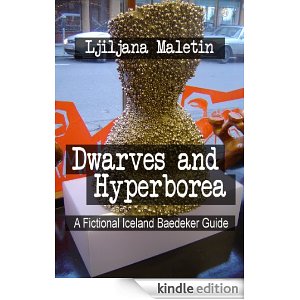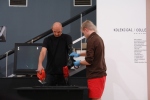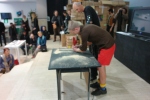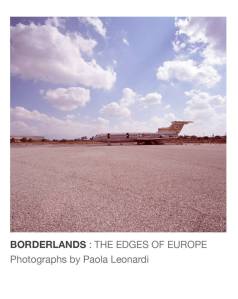NGO & AiR ART BOX // KREATIVNO-EDUKATIVNI CENTAR ART BOKS
NEWS:
#Meaning of Home_2022
From 23 November to 12 December, a performance and exhibition titled #Meaning of Home_2022 will be held in the District, as part of the Other? Europe programme arch. Within this programme, the meaning of home will be re-examined through an interdisciplinary approach.
Meaning of Home (Farsickness/Homesickness/Homelessness) represents a long-term, interdisciplinary, collaborative project (research, surveys, textual and audio-visual works, performance) of the non-governmental organisation KEC Art Box from Novi Sad, which has been conceived by multimedia artist, Dragan Vojvodić, and a writer, Ljiljana Maletin Vojvodić, during their residency and research projects, in cooperation with artists and locals from the European Capitals of Culture (Plzeň 2015 and Tartu 2024), international residency centres (Typa museum, Konstepidemin, Nelimarkka museum, Gunnarshús), associations of artists or non-governmental organisations EU – Japan Fest in Tokyo, and in Finland, Estonia, Iceland, Czech Republic, Sweden, Japan, etc.
Implemented with the participation of local residents, curators, artists and volunteers from Estonia (Izabella Eck, Tartu 2024 Foundation), USA (Anthony Cervino, Shannon Egan / Ejecta Project) and Japan (Japanese artists in ART BOX residence in Novi Sad, thanks to the cooperation with the EU Japan Fest from Tokyo), the interdisciplinary exhibition #Meaning of Home_2022 re-examines the phenomenon of home in an interdisciplinary, local and international context.
Have social networks become our home? Has the experience of home lost its ethnic specificity in the context of globalisation? To what extent do social marginalisation, pandemics, and migration affect the content of the term? How does society see migrants and the homeless? Can art make us more socially responsible and sensitise our relationship with the marginalised, the Other and the different? How about the people who lost their homes? Those who live in nursing homes? Who are condemned to live on the streets? Is anyone thinking about them? Do we feel empathy? Can we help them, and do we want to help them? Is it our individual or collective responsibility/guilt?
During the exhibition, the creative and educational centre Art Box will also present the publication ‘How to Understand New Art Practice’, an illustrated bilingual guide. It is a Serbian-English map for moving through Novi Sad’s new artistic practice intended for young people – an illustrated conceptual puzzle, the content of which emphasises the most important concepts, ideas, terms, and authors, and draws attention to alternative artistic expressions such as performance, artistic actions, exhibitions and interventions in non-gallery spaces, etc.
Artist in residence, October 2022
Chihiro ITO, a Japanese artist based in NYC and Mica Scalin, NYC (USA)

Chihiro ITO and Mica Scalin in front of Yoko Ono sculpture in Novi Sad
Chihiro ITO is a painter, multi-media artist, and filmmaker. He was born in Tokyo where he studied painting at Musashino Art University, also He took a continuing education writing course at the School of Visual Arts. He was an invited artist at European Capital of Culture events in Portugal, Rep. Cyprus, and Rep. Serbia.
In 2018, he received a grant from the Japanese government to stay in the US for my art activity and research the 1960s NYC avant-garde movement Fluxus. During that time, he encountered the godfather of avant-garde cinema Jonas Mekas. After that experience, he made a lot of experimental videos and poetry.
As a new immigrant to New York City, he felt disoriented by the new things around him. Every now and then, he encounters not-so-healthy-looking vegetables, like the typical NYC grocery store ones. They give me energy in a strange way. He consumes them with his eyes and his body and then recreates them in his paintings and drawings. This process naturally contains ecology, biology, and poetics.
After many months of painting in isolation in 2020, He was inspired to create a painting he could bring outdoors and thus began his new project „NEW FLAG for NEW PEOPLE“. In it, he imagined a bright future with a flag waving for everyone. Using vegetables as symbols of radical positive energy and health that benefit all people, this film conveys his hopes for what is possible. The film documents his flag-waving performances in different locations around Brooklyn, Richmond, California, Tokyo, etc.
He is the recipient of a Holbein award (2017), a New York Foundation for Arts grant (2021), a Robert Rauschenberg Foundation grant (2021), an award from Monira Foundation (2022), The Poetry Project (2022) and The Elizabeth Foundation for the Arts (2022), Bronx Art Space for A.I.R. in Governors Island by “NEW FLAG for NEW PEOPLE” project. His activities are MoMA PS1, Governors Island, Pioneer Works, Queens Museum, Mizuma & Kips Gallery etc.
In his art, he looks for the poetry opportunity in ordinary objects and everyday experiences to connect people across geopolitical boundaries.
His work has always been about lines. Lines that have a resemblance to children’s first attempt at drawing, lines that appear in traditional Japanese painting, or the scribbles of random notes. With his lines, he wants to draw visitors to the gallery into a quiet energy system that flows through vegetables and through our bodies and has the power to synchronize us in the chaotic world. His work „Vegetables in isolation“ were inspired by the Japanese Edo period’s traditional craftwork „Maki-e“ a lot.

Chihiro ITO during workshop in Novi Sad
“Before I visited, I knew Novi Sad had a significant place in Avant-garde and experimental art history in Eastern Europe. When I first saw this style of artwork and performance, I felt it was something familiar. It resonated with me deeply and I was surprised to find that there was a natural synchronization with my own work. I came here looking to expand my knowledge through in-person experience of the physical place and culture of the space.
Through my experience of creating my Flag painting performances, giving workshops, and communicating with local artists, curators, researchers, etc. I will develop a deeper understanding that I can bring back with me to my work in New York City.It is one of the reasons that I came here.”
IG: @chihirohihihi

Mica Scalin and Chiciro ITO in Novi Sad
Mica Scalin is an artist, entrepreneur, and educator. Her work has been shown at Transformer Gallery in Washington DC, 1708 Gallery in Richmond, VA, No World Project Space in Brooklyn, NY, and Mizuma & Kips in NYC. She is one of the humans behind dOGUMENTA: America’s First Art Show For Dogs commissioning original art for NY & LA exhibitions.
She co-authored „Creative Sprint: Six 30-day Challenges to Jumpstart Your Creativity“ with her brother Noah Scalin. She is the Managing Partner at Another Limited Rebellion, an Art and Innovation Studio. She has a BFA in Photography from The Corcoran School of Art and teaches at SUNY Purchase College.
„I began collaborating with Chihiro Ito through video as a way to communicate and connect while we were living on opposite sides of the planet. Each day we were apart we sent each other 30-second clips, eventually, we compiled these into a short film we premiered at our wedding ceremony. Now living together in Brooklyn. We created the No World project space to connect with our fellow artists/musician friends who were quarantined during COVID in 2020. I came to Novi Sad with no expectations of what I would discover and all the excitement of stepping into the unknown. While here, in addition to collaborating with Chihiro on his New Flag for New People project, I am participating in a 30-day Creative Sprint challenge that my business runs each year online. I designed Creative Sprint to introduce people to the idea of creativity as a practice that is incremental and cumulative. This year there are about 350 people receiving prompts each day and sharing what they make daily with our group on the internet. During these Creative Sprint challenges, I never know what I will create and I am forced to work fast and be very responsive to my environment at moment. Because of this, there’s a raw and unaffected quality to what I make that is very satisfying. I often find myself returning to these creations in my studio to build on this aesthetic intentionally.
So far, I have found myself recording bird sounds at Pariske Komune, collecting shells on Strand beach at sunset, making shadow puppets on the plaza in the city center, and drawing in cafes. During my stay in Novi Sad, my daily creating has become a journal of my experience here. I’ll take it home as a souvenir that I can revisit and reflect upon.“
IG @Micawave
Artist profile (in the no world project space page): https://noworldprojectspace.tumblr.com/artist
Artist in residence, september/october 2022 / Umetnici u Art Box rezidenciji semtembra i oktobra 2022. godine u Novom Sadu
JUNUYA ISHII, JAPAN
https://eu-japanfest.org/meet-up/artist/profile/528
http://junyaishii.com/en/bio-en/
Junya Ishii was born in Japan in 1983 and grew up in Mexico and Canada. He has been working across the fields of dance, theatre and film. His interest is to discover the state of consciousness and unconsciousness, the state of being through the body and its perception. In 2009, he began working for Regional Creative Atelier Josef Nadj, Kanjiza, Serbia to work for the theatre pieces choreographed by Josef Nadj, such as “Length Of 100 Needles (2009-2012), which toured in Germany, France, Hungary, Serbia, and Slovenia. He participated in the dance project “Asagao (2013) to perform / co-choreograph for music composed by Albert Márkos and Szilárd Mezei at Skene Theater in Budapest. As an actor, he worked for “A Bao A Qu ( Dir: Naoki Kato | 2007 | Busan International Film Festival), “Flowers of Evil (Dir: Tolnai Szabolcs | 2014 | 62nd Belgrade Documentary and Short Film Festival, FIPRESCI Award), and leading role for “2045 Carnival Folklore (Dir: Naoki Kato | 2015), which was premiered at 41st Seattle International Film Festival. In 2017, he received a grant from the Agency of cultural affairs, the government of Japan “The Program of Overseas Studies for upcoming artists to study International cultural relations at Casa Asia in Barcelona then began to produce the dance project TÓPOS (2018-). He believes in instinct and has been practising writing what he watched and thought. His dance is an extension of this self-practice.
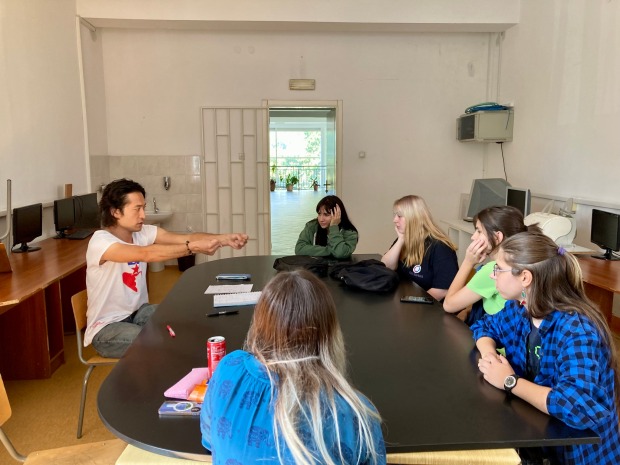 Junya Ishii during a workshop with students of Škola za dizajn Bogdan Šuput in Novi Sad
Junya Ishii during a workshop with students of Škola za dizajn Bogdan Šuput in Novi Sad
“The reason for the ART BOX residency is to understand the current situation between Serbia and neighboring countries and listen to the individual narratives that are not told at all in Japan’s media. I am curious about how the same generations analyze and deal with political obstacles and then move forward to cross the boundary and build alternative bridges positively. It is because I could find some similarities in Japan that the governments and major media manipulate people. Through the conversations with people and comparative study, I would like to understand more clearly the trap that humans are facing. For this period, I would like to have interview with local people and write. “(Junya Ishii)
ANNA BELLEFORTE, NETHERLANDS
https://www.annabelleforte.com/
Anna Belleforte is a mixed media artist with a background in fine arts, architectural conservation and architectural history. She is fascinated by the built environment and her work explores the personal and collective significance of places, identities and desires related to man-made structures, and the human experience of scale and perspective. From restructuring maps (Narrative Maps) and ‘updating’ 17th Century Dutch cityscape drawings (Stadsgezichten), atmospheric paintings of Canadian suburbia (Single Family Home) and site-specific installations that give a different perspective on a place, the work is aesthetically diverse. Yet it always expresses common experiences of (usually urban) spaces. Whether beautiful or gritty, buildings and the built environment have stories to tell.
 Work by Anna Bellaforte. Photo: Anna Belleforte
Work by Anna Bellaforte. Photo: Anna Belleforte
“I have travelled quite a bit and while “there’s no place like home”, I thrive on the stimulation and inspiration of new places. The great thing about travel is that when you come to a new place, you see that it’s not full of ‘foreigners’ but full of people like you, who simply want life without war, a good home, food on the table, freedom to make choices. The great thing about travelling as an artist is that you get to see things that locals don’t or no longer see, because it’s so commonplace to them. What I see in a new and unfamiliar city is how the city affects and structures our lives: how we navigate around each other on the pavement, how facades attract or repel people, where dogwalkers stroll, where spaces commercialize…
With a background in architectural conservation, I tend to focus my art practice on the built environment and by extension the history of a place. I cannot hope to understand (and potentially interpret) the complexities of Novi Sad or Serbia within a mere four weeks. My observations will likely be quite superficial. All I can do – as an artist – is respond to how the physicality, the visual aspects of the place make me feel. And they have made me feel both pleasant and uncomfortable. Pleasant are the colourful buildings, the (mostly) humane urban scale, the outdoor (café) spaces, the tree-lined streets. Uncomfortable are the intrusions on these: the air quality, shiny new blocks haphazardly inserted in the urban fabric, or gritty old unkept and rubbish-strewn spaces (waiting to be turned into shiny new blocks?).
Novi Sad has many attractive features: pretty buildings, a sense of culture, lots of cafés, friendly people, the Danube. The urban feature I’ve been most drawn to so far is the passageways that navigate through the urban blocks at ground level, transitions between street space and inner space. They are like open invitations, pulling you in to the light at the end of the tunnel. Or are they closed, personal spaces into which the owners do not want you to transgress? No matter, as a visual element they influence your experience of the city and they appeal to my need to observe and document, to work with contrasts (of colour or scale), and to combine realism with abstraction – or at least that is how I choose to see and depict these spaces. I have no idea if this will lead to a satisfactory series. All I can do is make. Perhaps it will express my approach to art in that I prefer to put emphasis on the light in life, rather than the dark. “ (Anna Belleforte)
KAKO RAZUMETI NOVU UMETNIČKU PRAKSU / HOW TO UNDERSTAND NEW ART PRACTICE, Art Box, Novi Sad, 2021.
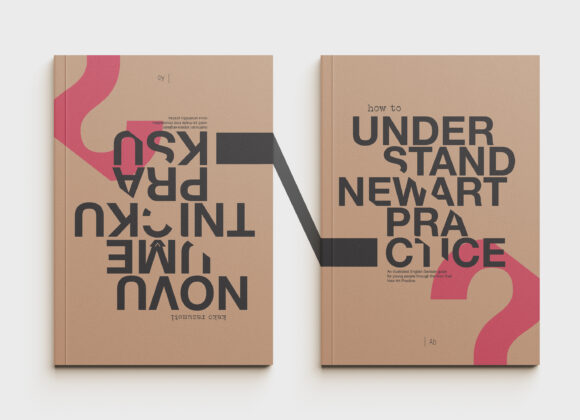
Kako razumeti novu umetničku praksu : ilustrovani srpsko-engleski vodič za mlade kroz novosadsku novu umetničku praksu / [Ljiljana Maletin Vojvodić, Dragana V. Todoreskov ; prevod na engleski jezik Nebojša Pajić]. – Novi Sad : Kreativno-edukativni centar Art boks, 2021 (Novi Sad : Artprint media). – 56, 56 str. : ilustr. ; 21 x 15 cm
PROMOCIJA I NAJAVA PUBLIKACIJE:
ALTERNATIVNO I KRITIČKO KULTURNO NASLEĐE

Nova umetnička praksa s kraja 60-ih i početkom 70-ih godina XX veka jedinstvena je pojava u kulturnoj istoriji Novog Sada. Ova alternativna umetnička praksa, zasnovana na ideji i konceptu, u kojoj se prožimaju vizuelna umetnost, književnost, lingvistika, lozo ja i sociologija, predstavlja naše urbano i kritičko kulturno nasleđe. Mladi ljudi, okupljeni oko tadašnjih omladinskih institucija kulture u Novom Sadu, donose nov senzibilitet u vizuel- nim umetnostima, književnosti i lmu, suprotan vladajućim kulturnim modelima i vrednostima. Oni osvajaju nove prostore dijaloga i slobode, propituju društvenu i kulturnu stvarnost, udružuju se u grupe, izjednačavaju umetnost i život, napuštaju tradicionalne izlagačke prostore poput muzeja i galerija i razvijaju nove umetničke strategije koristeći netradicionalne umetničke izraze kao što su: performans, bodi-art, hepening, govor u prvom licu, umetnička akcija, izlaganje i intervencija u vangalerijskim urbanim prostorima, lend-art, vizuelna poezija, siromašna umetnost (arte povera) i sl.
PRIRUČNIK ZA MLADE
Prvu hronologiju zbivanja u vezi s novom umetničkom praksom objavio je njen učesnik Mirko Radojičić u katalogu izložbe Nova umjetnička praksa 1966–78 (Zagreb, 1978). Tom temom će se, kasnije, baviti likovni i književni teoretičari, kritičari i kustosi. Objavljene su značajne monografske
publikacije kao i pesničke antologije u kojima su zastupljeni autori nove umetničke prakse, o njihovom delu su pisani stručni radovi i doktorati, pojedinim umetnicima su priređena sabrana dela i retrospektivne izložbe, njihovi radovi (ili dokumentacija o njima) nalaze se u privatnim kolekcijama, zbirkama Muzeja savremene umetnosti Vojvodine u Novom Sadu, Muzeja savremene umetnosti u Beogradu, pojedina čak i u kolekciji muzeja MoMA u Njujorku.
I pored svega navedenog, značaj i uloga novosadske nove umetničke prakse, poznata je, uglavnom, uskim umetničkim i akademskim krugovima. Kako suština nove umetničke prakse nije usmerena isključivo na krajnji rezultat već na stvaralački proces i kako je ta umetnost bila marginalizovana između ostalog i zato što su se neki od aktera i sami protivili institucionalizaciji, istorizaciji, katalogizaciji i muzealizaciji sopstvene umetničke prakse, ona nije dovoljno poznata široj javnosti, pogotovo ne mladima. Takva umetnost se ne pominje u srednjoškolskim udžbenicima, o njoj se ne uči u školi. Zato je dvojezični ilustrovani priručnik Kako razumeti novu umetničku praksu namenjen mladima i široj publici s namerom da se oživi novosadski urbani umetnički identitet, mapira uloga Novog Sada kao jednog od centara nove umetničke prakse u kulturnom prostoru bivše Jugoslavije, stvori mogućnost za novo sagledavanje umetničke prošlosti i savremene umetnosti i uspostavi kontinuitet s neokonceptualnom i postkonceptualnom umetničkom praksom savremenih novosadskih autora.
UMETNOST „ZA POČETNIKE”
Ova knjiga nije analitička studija, ne valorizuje niti normira – ona je samo jedan od podsticaja i putokaza za kretanje kroz novosadsku novu umetničku praksu, njen jezik, aktivnosti pojedinaca i grupa. Pisana je u maniru knjiga „za početnike” sa željom da se približe ideje i jezik netradicionalnih umetničkih medija, umetničkih dela koja nisu ulje na platnu, skulptura ili rimovani sonet. Još od 70-ih godina prošlog veka pa do danas, umetnost performansa nailazi na nipodaštavanje i osporavanje, uz najčešće tvrdnje da to uopšte nije umetnost. Novi vizuelni mediji sporo su prihvaćeni u institucionalnom sistemu u Srbiji, a razvijali su se upravo od eksperimenata umetnika i umetnica nove umetničke prakse. Mada su radom Vizuelnog studija Akademije umetnosti u Novom Sadu delimično ušli i u akademsko obrazovanje, trebalo je dosta vremena da muzejske institucije prihvate ovakav vid umetničke prakse. Zato se nadamo da će oživljavanje drugačije, alternativne umetnosti 60-ih i 70-ih godina XX veka doprineti i razumevanju savremene umetnosti, koja se često doživljava kao nerazumljiva, nedorečena ili čak neozbiljna.
dr Maja Rogač Stančević, NEVIDLJIVI GRAD I NJEGOVA UMETNOST
(PRIKAZ KNJIGE KAKO RAZUMETI NOVU UMETNIČKU PRAKSU)
Polja – prikaz knjige Kako razumeti novu umetničku praksu u produkciji NGO Art Box
NGO ArtBox project ‘Meaning of Home_2022’ (‘Homesickness/ Farsickness’) was chosen by the ‘Novi Sad 2022 – European Capital of Culture’
In order to encourage the inclusion of the local and national scene in the ‘Novi Sad 2022 – European Capital of Culture’ project and complete the programme for the title year, the selection jury approved 111 projects, out of 308 applications.
https://novisad2021.rs/en/despite-the-pandemic-the-biggest-call-for-culture-launched-in-novi-sad/
NA MAGRGINI, NOVOSADSKI KONCEPTUALIZAM
U novosadskoj knjižari Bulevar Books, održana peta tribina u okviru višegodišnjeg projekta književnice Ljiljane Maletin Vojvodić i književne kritičarke i teoretičarke dr Dragane V. Todoreskov pod nazivom Novi Sad # Književna jesen.

Na tribini s temom: Na margini – Novosadski konceptualizam su učestvovali: dr Sanja Kojić Mladenov, muzejska savetnica, MSUV; dr Dragana V. Todoreskov, književna kritičarka i teoretičarka i Zoran Pantelić, umetnik, producent i istraživač, osnivač Centar za nove medije kuda.org iz Novog Sada.

Moderatorka tribine je bila dr Maja Rogač Stančević, književna kritičarka. Tribinu je organizovao Kreativno-edukativni centar Art Boks iz Petrovaradina koji je i nosilac projekta.
Kreativno-edukativni centar Art Box je registrovao onlajn medi
Art Box portal je registrovan u Registru javnih glasila Republike Srbije – reg. broj IN001110 od 12.07.2021. godine.
Misija portala ART BOX
Podrška perspektivi Drugog i Drugačijeg; suprotstavljanje stereotipima i diskriminaciji; podsticanje aktivizma, edukacije i inovativnosti žena, mladih, marginalizovanih grupa i drugih građana kroz promociju savremene umetnosti, kulture i kulture življenja.
Ciljevi portala ART BOX
- promovisanje savremene umetnosti i kulture; umrežavanje umetnika i građana u regionu i šire; podrška stvaralaštvu žena;
- kulturološko, edukativno i socijalno osnaživanje građana i građanki u duhu demokratskih vrednosti kroz povećanje dostupnosti informacija o savremenoj umetnosti i kulturi življenja;
- podsticanje aktivizma i inovativnosti (posebno mladih), podizanje svesti o socijalno osetljivim društvenim grupama, odgovornom odnosu prema životnoj sredini, mentalnom i fizičkom zdravlju.
Uređivačka koncepcija
Uređivačka politika podrazumeva podsticanje kritičkog diskursa i celoživotnog učenja kroz savremenu umetnost i kulturu življenja. Misija portala je neformalna, proširena edukacija građana i građanki, suprotstavljanje diskriminaciji po osnovu nacionalne, rasne ili verske pripadnosti, jezika, pola, rodnog identiteta, seksualne orijentacije, invaliditeta i starosnog doba; poboljšanje vidljivosti stvaralaštva žena, alternativnih i istraživačkih projekata, podsticanje različitosti, Drugog i Drugačijeg.
Književnost, starenje, starost
Novi Sad#Književna jesen_2020
Književna tribina pod pokroviteljstvom Gradske uprave za kulturu Novog Sada

19.11.2020. // Knjižara Bulevar books, Novi Sad
Press Kliping:
https://korzoportal.com/projekat-knjizevnost-starenje-starost/
O Dorijanu Greju ili o ejdžizmu
08.10.2020.
Kreativno-edukativni centar Artboks, Novi sad – EKP 2021, KC Svilara, Novi Sad
Književna tribina: Dragana V. Tpdoreskov i Gordana Draganić Nonin
KC Svilara, Novi Sad
video:
http://Link do video-rada: https://www.youtube.com/watch?v=htDTFyulW9w
Učesnice projekta: Maja Babić, Sofija Većkalov, Zora Bojanić, Bojana Karavidić, Anđelija Simić, Anamarija Kaluđerović, Ljubica Vukov Mihailo, Branka Mićović, Slavica Grahovac, Maja Rogač Stančević, Snežana Baralić Bošnjak.
Link do sajta projekta: https://novisadknjizevnajesen.wordpress.com/o-dorijanu-greju-3/
TYPA’s Artist in residence, Tartu ECoC 2024, Estonia
Serbian Ministry of culture mobility grant, July-August 2020.
Serbian Ministry of culture mobility grant
(Umetnički rezidencijalni program u TYPA muzeju štampe i papira u Tartuu, Evropskoj prestonici kulture 2024. godine / Grant za mobilnost Ministarstva kulture Republike Srbije, 2020. za istraživački projekat Doživljaj doma u savremenom društvu i rezidencijalni boravak u Estoniji)
Detaljnije /
Typa, Tartu, Estonia, July-August 2020
‘Post Nora’ Art(ist)?
the Discourse of Women Art
(appropriation, contextualization, reinterpretation, reintegration, collage)
http://novimagazin.rs/vesti/u-novom-broju-nedeljnika-novi-magazin-procitajte:
Kultura, Intervju: Ljiljana Maletin Vojvodić
Nomadstvo kao imperativ
Između prve i druge knjige mojih Embahada, to jest mog prvog i drugog službovanja u Berlinu, u Beogradu sam živeo trostrukim životom profesora, novinara i književnika. Sva tri su kod nas u to doba bila čemerna – citira Miloša Crnjanskog sagovornica Novog magazina u svom novom romanu. Promenilo se od tada kod nas – države su nam se smanjivale, promenilo se to doba – njen roman objavljen je ove godine, a kako spisateljica radi i kao profesorka književnosti i piše za novine, časopise i portale, otkrivamo koliko su ove tri profesije i dalje čemerne…
Razgovarala: Gordana Nonin

Travel and local informations
Novi Sad – European Capital of Culture in 2021
European Youth Capital
https://www.facebook.com/opens2019/?hc_ref=PAGES_TIMELINE
http://novisad2021.rs/en/what-is-european-capital-of-culture/
More photos of Novi Sad:
BRUSSELS – BRUSSELS – Novi Sad has been named one of the three European Capitals of Culture for 2021.
Novi Sad and Timisoara, Romania, will in November be joined by a city in Greece – Eleusis, Kalamata or Rhodes.
Novi Sad beat Montenegro’s Herceg Novi in the final selection round, becoming the first city from a non-EU country to take the prestigious title.
The decision to name Novi Sad a European Capital of Culture for 2021 was made by an independent panel of expert judges and announced Thursday night at the European Commission headquarters in Brussels.
https://inserbia.info/today/2016/10/novi-sad-declared-the-european-capital-of-culture-2021/
LOCAL INFORMATIONS
Map of Vojvodina province Autentic architecture from old Vojvodina times
Petrovaradin fortress and Sremski Karlovci (3 km from ArtBox)
(7 km from ArtBox residency)
Song about Novi Sad in Serbian language by Djordje Balasevic, the most authentic singer and poet from Novi Sad
1. FOOD AND DRINK
http://en.wikipedia.org/wiki/Serbian_cuisine
Novi Sad is well-known for the abundance of good food and top-ranked gastronomic restaurants. The most popular specialties include grilled meat (you must try ćevap (pronounced chevap)). Another local feature is Karlovački Bermet, red wine which was highly acclaimed at the Viennese Court.
There are many restaurants in Novi Sad which serve international and national cuisine, Italian specialties, Chinese food, fish and vegetarian food. The average price for a meal per person is €3 to €10. Local beer costs around 1.2€, imported beer is €1.5 to €2.5, a cup of espresso coffee costs from €0.8 to €1.2 and juices are 1 to 1.5€. Most restaurants close at 11pm. Numerous fast food restaurants and grill stands are open 24 hours a day, and the average price for a meal is 1.4€.
2. PHONE
Serbia is a 3G zone
You can easily reach any part of the world from Serbia, using telephone connections. Mobile telephones and public telephone booths are at your disposal. Pay-phone cards, 060/061/062/063/064/065/069 cell phone sim cards as well as electronically prepaid airtime to any value you wish are available at most of the kiosks around the city.
3. INTERNET
The city centre is a wireless internet zone, so you will be able to get online from there provided that you have your laptop with you. The username and password are usualy both „gost“ (without the quotation marks), but you’ll be able to find a sign with the username/pass parametres at the following hotspots in the city: Trg slobode, Katolička porta, Laze Telečkog street, Zmaj Jovina street, Dunavska street, Spens, Skate park, Strand, Kej.
4. CURRENCY
The currency in Serbia is the ‘Dinar’ (or codenamed: RSD) – this is hard to come across in the UK as most banks don’t stock the currency. You can buy your currency at Belgrade airport when you arrive.
Dinar banknotes are available in units of 10, 20, 50, 100, 200, 500, 1000, 2000 and 5000. Mastercard and Visa are generally accepted in shops, cafes and restaurants. ATM machines are available all over the city of Novi Sad.
Rough ideas on prices:
Beer can = from €0.6
Cigarettes = from €1
Taxis = up to €3 from Novi Sad centre to the festival site
5. TOURIST INFO CENTRES
Tourist Organization of Serbia,
Dečanska 8a/v 11000 Belgrade
+381 (0) 11 3342521
http://www.serbia.travel/
Tourist Information Centre,
Bulevar Mihajla Pupina 9, 21000 Novi Sad
+381 (0) 21 421811
Tourist Organization of Vojvodina,
Bulevar Mihajla Pupina 6, 21000 Novi Sad
+381 (0) 21 452910
NS CENTAR
Corner of Zmaj Jovine and Modene, Novi Sad
Tel +381 (0) 21 4724864
6. LANGUAGE
http://www.omniglot.com/language/phrases/serbian.php
Click to access serbian-phrases.pdf
Official language in Serbia is Serbian. The official scripts are both Cyrillic and Latin.
| English Phrases | Serbian Phrases |
|---|---|
| English Greetings | Serbian Greetings: |
| Hi! | Zdravo! |
| Good morning! | Dobro jutro! |
| Good evening! | Dobro veče! |
| Welcome! (to greet someone) | Dobrodošli (pl); Dobrodošla (f); Dobrodošao (m) |
| How are you? | Kako ste? (polite); Kako si? |
| I’m fine, thanks! | Dobro. Hvala. |
| And you? | A vi? (polite); A ti? |
| Good/ So-So. | Dobro/Kako – tako. |
| Thank you (very much)! | Hvala (puno)! |
| You’re welcome! (for „thank you“) | Nema na čemu! |
| Hey! Friend! | Hej! Prijatelju! |
| I missed you so much! | Nedostajao (m)/ Nedostajala (f) si mi puno! |
| What’s new? | Šta ima novo? |
| Nothing much | Ništa |
| Good night! | Laku noć! |
| See you later! | Vidimo se kasnije! |
| Good bye! | Doviđenja! |
| Asking for Help and Directions | |
| I’m lost | Izgubio (m) / Izgubila (f) sam se |
| Can I help you? | Mogu li da vam (polite) / ti pomognem? |
| Can you help me? | Možete li da mi pomognete? |
| Where is the (bathroom/ pharmacy)? | Gde je (kupatilo / apoteka)? |
| Go straight! then turn left/ right! | Idite pravo! Onda skrenite levo/desno. |
| I’m looking for john. | Tražim Džona. |
| One moment please! | Sačekajte momenat. |
| Hold on please! (phone) | Sačekajte molim vas! (telefon) |
| How much is this? | Koliko košta ovo_ |
| Excuse me …! (to ask for something) | Izvinite.. |
| Excuse me! ( to pass by) | Izvinite / Pardon |
| Come with me! | Pođite sa mnom |
7. VISAS
EU citizens, citizens of EU membership candidate countries, Croatia, the USA and Canada do not need visas for Serbia.
However, you do need your passport, so please do not forget to bring it.
Please find more detailed information about visas at Ministry of Foreign Affairs of Serbia website.
8. CLIMATE AND WEATHER
The climate in Serbia is moderately continental and the summers are usually very hot, although there is the risk of rainstorms that can catch you by surprise. The temperature in July is often over 30°C and the average temperature of the Danube is around 24°C. We highly recommend that you visit the famous Danube river beach in Novi Sad – Štrand. For only 50 dinars, you can enjoy a whole day of sun and beach fun below the Most Slobode (Liberty Bridge) in Novi Sad.
If you want to check what the weather is going to be like days before you arrive and during your stay, there are many ways to do this and we recommend Republic Hydrometeorological Service of Serbia website.
9. USEFUL NUMBERS
Police +381 92
Military Police +381 9860
Fire Brigade +381 93
Time +381 95
Information +381 (0) 700 098210
Information Centre +381 985
International Calls +381 901
Urgent medical help +381 94
Red Cross +381 (0) 21 422454
Medical Institute – Sremska Kamenica +381 (0) 21 4805700
Novi Sad Central Bus Station
+381 (0) 21 444021
+381 (0) 21 444022
+381 (0) 21 444023
Novi Sad Central Train Station:
+381 (0) 21 443200
Area codes for Europe:
(Dial 00+ for calls outside of Serbia)
TRAVEL INFORMATION
1 BY PLANE
To Nikola Tesla airport, Belgrade, Serbia
Airport Belgrade
Info telephone
+381 (0) 11 601424
Belgrade Airport Website
Novi Sad is 70 km / 45 miles from the Belgrade airport
By Bus: The Novi Sad Public City Transportation introduced a line from Novi Sad to the Belgrade „Nikola Tesla“ Airport, and from the airport to Novi Sad. One-way ticket costs 950 RSD, or about 9 EUR, and can be bought inside the bus, at the driver’s, or at the intercity bus station.
Schedule:
From Novi Sad to the airport: 05:00, 07:30, 09:30, 11:30, 13:30, 14:30, 17:30, 18:25, 20:15
From the airport to Novi Sad: 06:35, 09:05, 11:05, 13:05, 15:05, 17:00, 19:15, 20:55, 22:00
Belgrade Airport to Belgrade Bus/Train Station:
Belgrade airport is 15km from the centre of Belgrade. One bus stop is next to Terminal 1 and the other one is in the front of the Arrivals entrance.
You can find cheap flights to/from Budapest airport, Hungary as well (5 hours by van /operate several times per day to Novi Sad/ or car from Novi Sad)
2. BY CAR
Driving in Serbia:
All roads are clearly marked so it’s difficult to get lost. The speed limit varies from place to place so it is important to respect and follow all road signs. If you posses a valid international or local driving license and if you are comfortable with driving on the right side of the road, then you are most welcome to drive in Serbia.
Peage is charged on the following roads: E-75 Belgrade – Novi Sad, E-70 Novi Sad – Feketić – Subotica, E-75 Belgrade – Niš, E-75 Niš – Leskovac and E-70 Belgrade – Šid. Peage prices range from 2 to 40 EUR.
For any assistance during your travel through Serbia, you can call AUTOMOBILE AND MOTORCYCLE ASSOCIATION OF SERBIA – AMSS:
AMSS-road assistance +381 1987
3. BY TRAIN
Train tickets are much cheaper if you buy them in the country you travel from, but if you want, you can buy tickets in advance online at:
internationalrail.com
seat61
reiseauskunft.bahn.
Other useful websites: zeleznicesrbije.com
Croatian Railways: hznet.hr
Slovenian Railways: slo-zeleznice
InterRail: interrail
Budapest – Novi Sad:
The trip takes about 6 hours by bus.
Budapest to Novi Sad – Departures daily from Keleti Railway station at 09:05, 13:00 and 22:20
Novi Sad to Budapest – Departures daily to Keleti Railway station at 08:30, 12:44 and 23:43
Ticket Price: 26 EUR (round-trip)
Novi Sad Train Station
Jase Tomica Boulevard 6, 21000 Novi Sad
+381 (0) 21 443200
Belgrade Train Station
+381 (0) 11 3602899
4. BY BUS
Belgrade Central Bus Station to Novi Sad:
Buses run every 15 to 45 minutes and the ride takes an hour and a half.
Belgrade to Novi Sad:
Every 15 to 45 minutes from 03:00 to 23:59
Novi Sad to Belgrade: Every 15 to 45 minutes from 5:00 to 23:59
Price: 5 – 8 EUR (you will have to pay in RSD – 600-800)
With this type of traveling, these numbers may be of use to you:
Novi Sad Central Bus Station
Jase Tomica Boulevard 6, 21000 Novi Sad
+381 (0) 21 444021
+381 (0) 21 444022
+381 (0) 21 444023
Belgrade Central Bus Station
+381 (0) 11 636299
7. CITY TRANSPORTATION









































